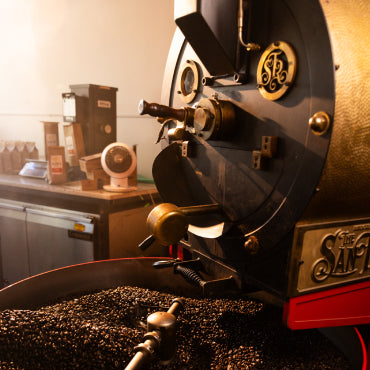Biscotti are undoubtedly the most forgotten cookies in the American diaspora. Neither do they feature fanciful shapes, nor do they glam up in glitter. Alas, they are not even the first name when you prepare a list of all-time American favorite snacks.
However, they have continued to dominate the holiday season due to their transportability, long shelf life, and amazingly varied range of flavors. When you have this timeless cookie in your hand, you can switch between dipping, dunking, or dry snacking.
The Italians have remained committed to it as their go-to snack for decades. However, they failed to keep the secret of this sophisticated treat from the rest of the world for long.
Biscotti are extremely simple to make at home. Crispy and crunchy, the name 'biscotti' comes from the Latin word "biscoctum," which seems more like a spell from the Harry Potter movies than a snack item.
Like now that you have understood what is biscotti, so let's navigate the ancient history of biscotti. We will also tell you about the necessary ingredients and processes to follow our gluten-free biscotti recipe at home. Lastly, check out the tips and variations section at the end to improve your skills further.
Can You Pass The History Of Biscotti Test?
Biscotti are baked twice to achieve that uber-dry and crunchy texture. They have a Latin lineage, with the name coming from the ancient term 'biscotus' meaning twice-baked. They are the perfect partner for your piping hot cup of coffee and have developed a fine reputation worldwide for cookies.
The Italians use biscotti as an umbrella term to address many different cookie varieties. However, Americans have long been particular about calling this sweet, crisp, twice-baked Italian cookie, biscotti. Its history dates back to the early days of the Roman Empire. The first biscotti were prepared more for convenience than as a leisurely treat in Rome.
Travelers back then would count upon this cookie as a lasting source of nourishment on extended voyages. People in those days would initially bake the biscotti just to cook the ingredients. Then, they would repeat the process to dry them out completely, making the cookies more durable and less perishable on long journeys.
The decline of the Roman Empire put biscotti's popularity on hold. However, the Renaissance saw a re-emergence of its popularity in Tuscany, and popular folklore led biscotti to Rome. To find its roots in ancient times, Tuscany today is proudly associated with the celebrated chewy snack.
The people of Tuscany would refer to biscotti as Cantucci Di Prato. By then, they had successfully transformed into a treat, no longer a utility cracker. In nearby Prato, they would be flavored with almonds. You will always find Cantucci in every pasticceria in Tuscany.
It won’t be inappropriate to claim that biscotti were born in Italy but reimagined in America. It has a somewhat storied journey across the Pacific. According to legends, it was Christopher Columbus who introduced biscotti to the American population. Much like his fellow countrymen, he was also looking for a food source that would last his extensive voyages.
However, these cookies became a mainstay of their diet by the time the European settlers landed on the shores of America. The colonial period witnessed the Americans embracing these hard, flavorless biscuits. This is because people found convenience in baking them quickly and wouldn’t need to invest in a lot of exotic ingredients.
It was the inhabitants from the Southern colonies who tried their hands first in making biscotti more palatable. Through the ages, they have tried their hands at developing various iterations of the cookie- by adding dried fruits and extract flavorings. The broader American population has welcomed the idea of biscotti much like most Italian foods.
Your Guide to Making the Perfect Gluten-free Biscotti
Gluten-free biscotti are the perfect foil for your coffee—they are crispy and crunchy and allow dipping and dunking. However, it's challenging to identify gluten-free biscotti.
According to our datasets, the gluten-free bakery market has been expanding rapidly worldwide in recent years. This is due to the growing awareness of celiac disease, the increase in gluten sensitivity, and the general trend towards a healthy lifestyle.Hence, you can no longer consider gluten-free products a niche option when exploring. They do not give up on taste or quality. The same applies to gluten-free biscotti.
In this blog, we have discussed a gluten-free biscotti recipe that feels and tastes like genuine biscotti. However, we significantly alter the process by replacing the traditional white flour with a gluten-free blend.
Ingredients for Gluten Free Biscotti
- Gluten-free flour—You must pick a gluten-free flour blend for your biscotti, and it must ensure added xanthan gum.
- Baking powder– A leavening agent is necessary to give the biscotti stability and rise.
- Salt– Opt for a salt pinch to balance the sweet flavors.
- Olive oil– In minimal amount.
- White and brown sugar—We use a combination of both sugars to develop sharp edges in the biscotti. This guarantees subtle vanilla and almond flavor with every profile.
- Eggs– You must pick room-temperature eggs.
- Cranberries– We recommend unsweetened dried cranberries.
- Pistachios and almonds– choose either pistachios or almonds.
Easy and Healthy Gluten Free Biscotti Recipe
With this recipe, you can make the biscotti both crispy and crunchy without spoiling the taste. Moreover, you can consider adding your favorite nuts and dried fruits to make the cookie more tasty and flavorful.
Our heart goes out to gluten free desserts and cookies that get poor reps for having odd textures- however; our gluten free biscotti recipe breaks that myth.
Making the Dough
- Mix the melted butter, sugar, and eggs in a bowl.
- Beat the contents well until mixed and smooth
- Add the vanilla bean paste (or vanilla extract)
- Add almond extract
- Beat again to combine
- Add the dry ingredients
- Mix them well until you get smooth dough
Keep in mind that the dough should not be too sticky to touch despite being very soft. Let the dough chill for about fifteen minutes before shaping it into a log.
Chilling the Dough Simplifies the Process
Most biscotti recipes ask you to shape the dough directly without chilling it. However, we don't recommend it since the dough is extremely soft at that stage. It can be challenging if this is your first time handling it.
When you leave the dough to chill for about fifteen minutes in the fridge, you firm up the butter and, therefore, the dough itself. Moreover, it gives the gluten-free flour enough time for hydration, which also assists in making the dough more convenient to handle.
Shaping the Dough
- Carry the dough from the bowl once it is chilled as necessary, and put it onto a lightly floured surface. You must avoid adding too much flour onto your surface. However, put enough so that the dough doesn't stick to it. Now will be time to turn the dough into a short log.
- Carry the log onto a large lined baking sheet. Follow it by using a pastry brush to take away any excess flour.
- Build the dough manually into a log that roughly measures 14 x 3 ½ x ¾ inches. We recommend this to fit the log along the diagonal of the baking sheet. Alternatively, you can shape it into two 7 x 3 ½ x ¾ inch logs if it's convenient for you.
- Ensure the log isn't unnecessarily thick and narrow, as it would result in peculiar-shaped or odd-looking biscotti.
The First Bake & Cooling
Now is the time to bake the cookie dough log at 180 ºC for thirty minutes. A simple rule of thumb here is to look out for the golden brown color on the dough. During the baking process, your dough will expand since it contains baking powder.
Additionally, it will feature some cracks along the surface. There's no need to panic; it's perfectly fine and part of the process.
Once you have baked the dough for the first time, remove the biscotti log from the oven and leave it to cool on the baking sheet until it is cold enough to touch. We recommend you avoid slicing the log into individual biscotti without cooling it down. The log will be fragile, with the biscotti breaking and crumbling as you try to cut.
Slicing & the Second Bake
Use a knife on the now-warm cookie log to cut into ¾-inch thick slices. Adapting to a sawing motion will provide you with the cleanest slices. It will also assist you in making minimal cracks or breakage.
Be mentally ready to experience breakage or cracks in a few biscotti (especially at the ends)—it is expected!
Consistent practice will help you reduce breakage. Once sliced, place the biscotti (cut sides down) back onto the lined baking sheet. Bake them again at 130ºC for forty minutes, flipping them halfway through.
We ask you to bake the dough again to dry it out completely. Make sure to run a low oven temperature and a long baking time. Also, don't skip flipping them over at intervals to evaporate any possible moisture from both sides.
Shift the biscotti slices to a wire rack as soon as you have finished baking them. Avoid putting them on a baking sheet to cool down after the second round of baking. It's a foul choice since it would allow condensation underneath, compromising the point of drying them out.
How to Store Gluten Free Biscotti?
The gluten-free biscotti can be kept in a standard airtight container at room temperature for two weeks or four at maximum. Their long shelf lives make them suitable for those who like to keep some hidden away in a cupboard. Say goodbye to having coffee without any tasty accompaniment.
- To store: Biscotti can be stored perfectly at room temperature, covered in airtight containers, for up to four weeks.
- To freeze: You can store biscotti in a zip-lock bag in the freezer for up to six months.
Tips for Making Delicious, Crispy, Gluten Free Biscotti Perfect Every Time
Using the traditional twice-baked method, you can make this biscotti recipe with a handful of ingredients in one bowl. Once you get the hang of the general concept, all your batches will be lip-smacking.
Check Your Oven Temperature before Baking
You must bake the biscotti dough as a single loaf (or two mini loaves) at 350°F. Look for the golden brown color on the dough, which tells you it is ready for slicing. The loaf is not completely done for the purpose, but it will be in a suitable state for slicing.
During the second baking session, dial down the heat to 300°F and bake both sides until lightly (or golden) brown. Keeping the temperature too high inside the oven for the second bake will achieve the desired color, but the center will be fragile.
Adjust the Baking Time to Make Crispier Cookies
Many prefer their biscotti to be crispy but not burned, which allows them to dip each bite into their beverage. If you share similar proclivities, bake your batch for ten minutes on both sides at 300°F—keep them in the oven until they reach golden brown.
Alternatively, if you prefer your biscotti chewy in the center and enjoy easy bites without dunking, stick to the original baking times. We recommend dialing down the oven temperature to 275°F if you're uncertain about the crispiness of the cookies inside the oven.
Saw the Once-Baked Biscotti Loaf Carefully
Don't expect your biscotti loaf to be firm through the initial baking. Attempting to slice it with a sharp, non-serrated knife would also cause the center of the cookie to collapse. The biscotti won't crisp evenly in the oven if you don't achieve a clean cut on both sides when slicing.
You must use a large bread knife for the job. Otherwise, even a tomato knife would suit the purpose better than a chef's knife.
Slice Your Once-Baked Loaf of Gluten Free Biscotti on the Bias
Slicing the loaf into biscotti cookie pieces on the bias means cutting them at an angle. This allows you to achieve the most flat surface area on both sides of each cut. For the easiest slicing, you must ideally consider shaping your original log with the short sides sharply angled in the same direction.
Substitutions and Variations for Gluten Free Biscotti Ingredients
The gluten free biscotti recipe in today's blog is naturally dairy-free. Although most Americanized Italian cantucci recipes feature oil or butter, we have used egg yolks as the only fat in this cookie dough.
Can You Make This Recipe Into Gluten Free Vegan Biscotti?
If you wish to turn this recipe into a vegan snack, you must replace the eggs. To compensate for the eggs in the recipe, you can opt for chia eggs. To make two chia eggs, you have to place two tablespoons of ground white chia seeds in a small bowl with two or three tablespoons of lukewarm water. Whip the mixture until it gels.
Can You Replace The Chopped Almonds With Other Mix-Ins?
You can always choose to replace the Almonds with other relatively dry mix-ins, like miniature chocolate chips or toasted chopped hazelnuts. These are perfect for absorbing some of the moisture in the loaf.
However, avoid mix-ins with more moisture, such as small pieces of dried fruit, since they won't absorb moisture. We recommend you adhere to the recipe instructions for baking the biscotti cookie when leaving the almonds- and bake them for a few more minutes at each stage.
To Dunk or Not To Dunk
Now that you have learned all about the Italian biscotti cookies, it's time for us to tackle the pressing question- To dunk or not to dunk? Well, we do dunk when having biscotti! But the honest debate should revolve around the dunking liquid of preference. We say the dry, crunchy texture of biscotti is perfect for dunking.
1. The Coffee Dunk
Most people like to dunk their biscotti in their cappuccino or Americano coffee to allow it to soak up the warm caffeinated goodness. The crunchy hardness of the cookie is perfect for absorbing the heated liquid of your coffee.
2. The Vino Dunk
The purists would only recommend wine as the perfect partner for biscotti cookies. The good people of Tuscany dip their biscotti into rich red wines to enjoy the snack. Most biscotti lovers agree that pairing biscotti with a sweet Italian wine is the perfect example of a hearty Italian meal.
3. The Milk Dunk
Lastly, some people enjoy dipping cookies into milk, either warm or cold. Although the Biscotti purists would frown upon this type of dunking, if the dunk fits, you go for it. Milk and cookies have gone hand in hand for eternity.
The Many Flavors of Biscotti
A cookie originally tasked for travel with minimal attention to flavorings has evolved significantly over the years, featuring lip-smacking flavors and ingredients. We encourage you to find your match and then explore the others just to be sure—because why not?
We have compiled a list of popular flavors that abound for these crusty beauties:
- Almond
- Cappuccino
- Cranberry
- Chocolate Chip
- Pistachio
Creative Ideas for Serving Biscotti
You could be enjoying a lazy afternoon at a café, decorating the snack table at a holiday gathering, or finishing off the perfect meal with a sweet—we find these to be the perfect ways to enjoy biscotti.
We have discussed additional ways to include this crunchy cookie in your culinary goals.
Paired With Ice Cream
You can crumble biscotti into bits and chunks and sprinkle them over a bowl of ice cream, gelato, or frozen yogurt. Impress your friends and family with this incredible treat, which will be hard to resist.
Mix Up the Parfait
You could consider swapping the granola in your traditional parfait with biscotti to elevate the overall experience of your breakfast.
Add Something New To The Fruit Platter
Up the sophistication game of your fruit platter by adding biscotti chunks all over.
Take S'mores to the Next Level
To improve the taste of s'mores, you could consider swapping out the boring graham crackers for the richness of biscotti.
Indulge in Delicious Gluten-Free Biscotti with Aldo's Coffee
At Aldo's Coffee, we go the extra mile to ensure every bite becomes an immersive experience for you. We have an extensive range of imported and authentic Italian cookie recipes to cater to every palate and make you relish the experience of home-baked biscotti.
We are the industry-leading source of biscotti cookies across the pond. We put considerable effort into shaping our culinary ethos on the foundation of authenticity. Every product under our roof is proof of our pursuit of the most wholesome flavors.
Explore a burst of flavor with every bite and enjoy healthy eating with Aldo's Coffee! Try our European-style baked biscotti today.










